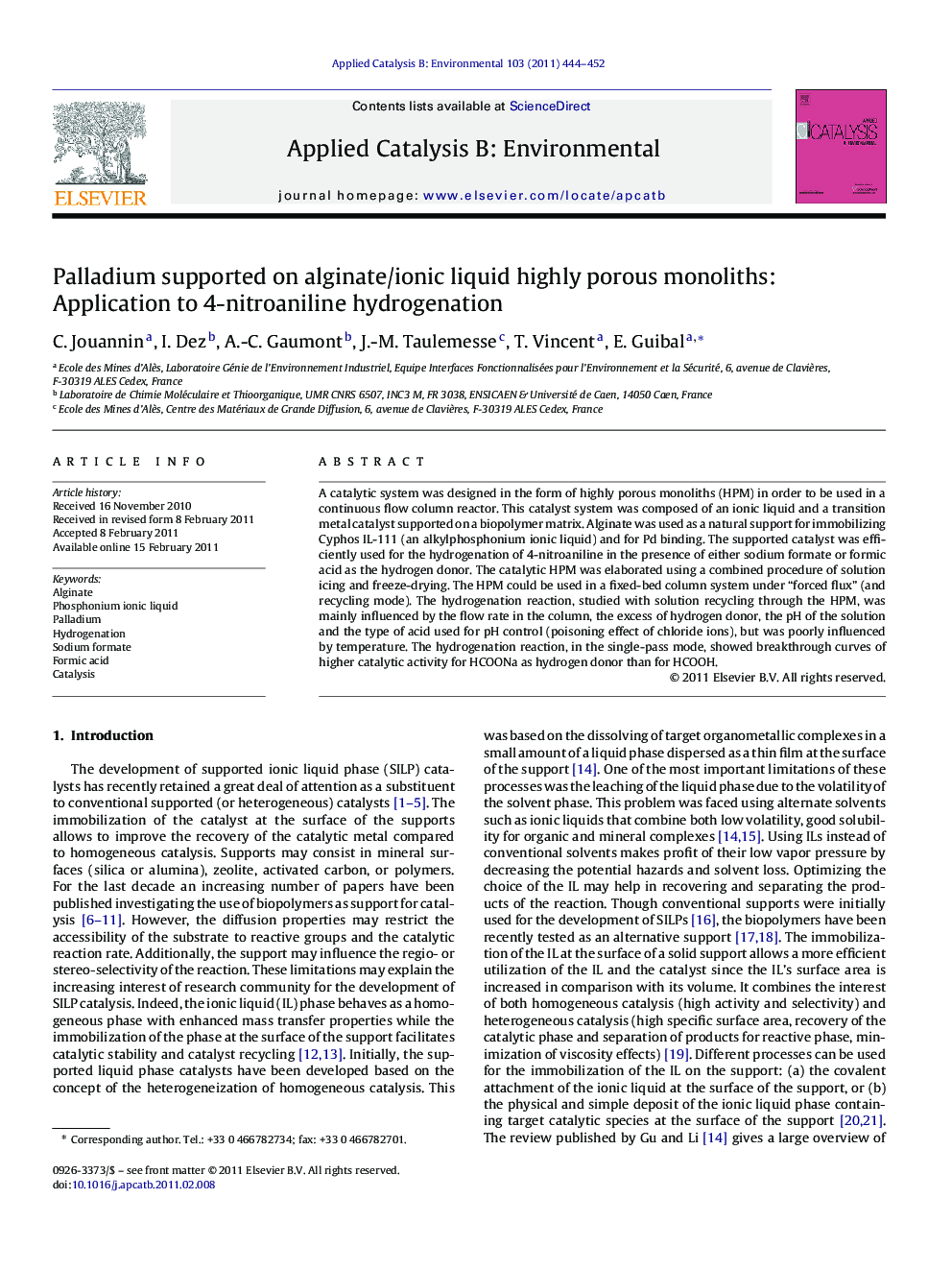| Article ID | Journal | Published Year | Pages | File Type |
|---|---|---|---|---|
| 46870 | Applied Catalysis B: Environmental | 2011 | 9 Pages |
A catalytic system was designed in the form of highly porous monoliths (HPM) in order to be used in a continuous flow column reactor. This catalyst system was composed of an ionic liquid and a transition metal catalyst supported on a biopolymer matrix. Alginate was used as a natural support for immobilizing Cyphos IL-111 (an alkylphosphonium ionic liquid) and for Pd binding. The supported catalyst was efficiently used for the hydrogenation of 4-nitroaniline in the presence of either sodium formate or formic acid as the hydrogen donor. The catalytic HPM was elaborated using a combined procedure of solution icing and freeze-drying. The HPM could be used in a fixed-bed column system under “forced flux” (and recycling mode). The hydrogenation reaction, studied with solution recycling through the HPM, was mainly influenced by the flow rate in the column, the excess of hydrogen donor, the pH of the solution and the type of acid used for pH control (poisoning effect of chloride ions), but was poorly influenced by temperature. The hydrogenation reaction, in the single-pass mode, showed breakthrough curves of higher catalytic activity for HCOONa as hydrogen donor than for HCOOH.
Graphical abstractSEM-EDX analysis of highly porous monolith supporting Cyphos IL-101 for Pd immobilization and its application to the hydrogenation of nitroaniline.Figure optionsDownload full-size imageDownload as PowerPoint slideResearch highlights► Synthesis of new Pd catalyst supported on ionic liquid/alginate composite. ► Highly porous monolith catalysts for flow-through application (recirculation mode). ► Application to nitroaniline hydrogenation using formate as the hydrogen donor. ► The flow rate is important for optimizing the catalytic effect. ► SEM–EDX analysis and characterization of supported Pd catalyst.
